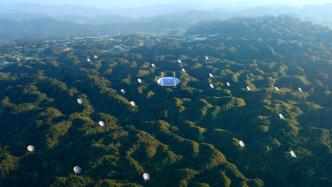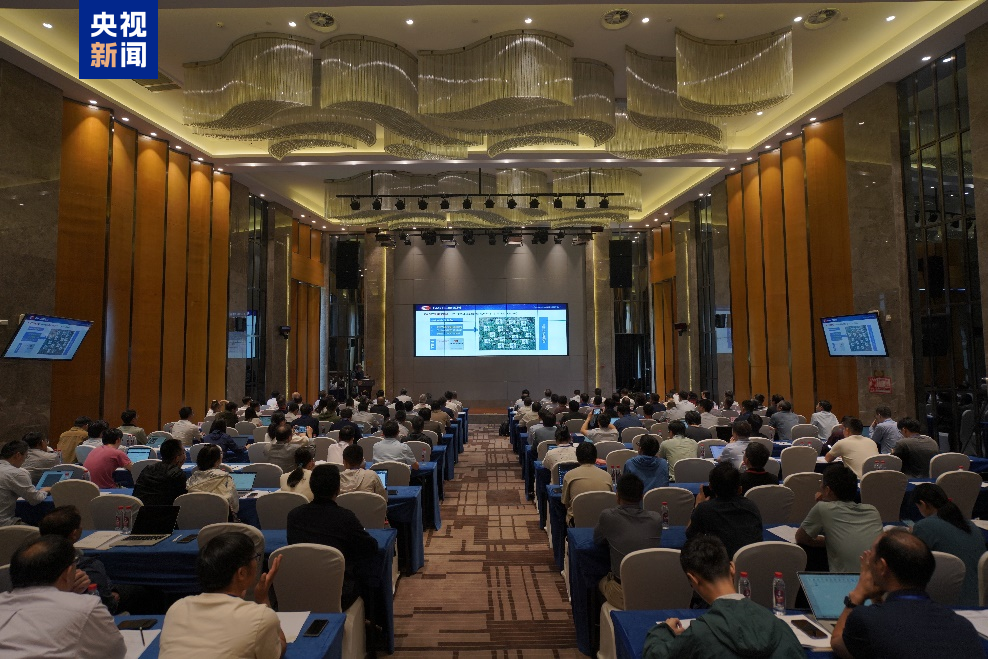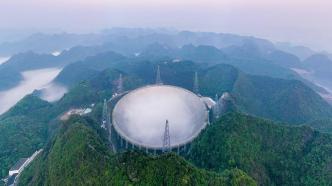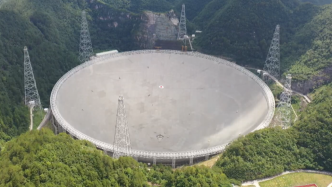
On the 25th, the "Chinese Sky Eye" celebrated its 8th anniversary since its completion and activation. Less than 3 kilometers away from the "Chinese Sky Eye," a 40-meter class radio telescope (core array experimental prototype) is currently being installed on a nearby mountain peak.
Jiang Peng, deputy director of the National Astronomical Observatory of the Chinese Academy of Sciences, stated that they plan to utilize the excellent electromagnetic wave environment within 5 kilometers surrounding the "Chinese Sky Eye" to construct a core array composed of 24 units of 40-meter diameter radio telescopes along with FAST.
The full name of "Chinese Sky Eye" is the Five Hundred Meter Aperture Spherical Telescope, abbreviated as FAST. It is the world's largest single-dish radio telescope independently designed and built by China. In January 2020, the "Chinese Sky Eye" passed national acceptance and was officially opened for operation.
In October 2017, the "Chinese Sky Eye" announced the discovery of its first batch of new pulsars, marking the first time that Chinese researchers used their independently developed radio telescope to discover pulsars. On April 17 of this year, the FAST Operation and Development Center of the National Astronomical Observatory announced that the number of new pulsars discovered by the "Chinese Sky Eye" has surpassed 900, which is more than three times the total number discovered by other telescopes worldwide during the same period.
Jiang Peng explained that the "Chinese Sky Eye" can produce "more results" and "better results" not only due to the relentless efforts of the relevant teams but also because of its performance advantages, highlighting that "the 'Chinese Sky Eye' has a clear advantage in sensitivity."
Given that excellent results are frequently produced and performance advantages are evident, why is there still a need to construct the FAST core array?
The answer is: to plan ahead and maintain the leading advantage in sensitivity while compensating for inherent deficiencies in resolution.
It is understood that globally, several radio telescope arrays, including the Square Kilometer Array Phase 1 (SKA1) and the Next Generation Very Large Array (ngVLA) in the United States, are currently under construction.
The international major scientific project, the Square Kilometer Array, is expected to complete its first phase of construction by 2029, while the Next Generation Very Large Array is projected to be completed by 2035.
Jiang Peng noted that sensitivity and resolution are the core indicators that determine a radio telescope's competitiveness. The "Chinese Sky Eye" has high sensitivity but insufficient resolution; once the aforementioned radio telescope arrays are completed and utilized, the "Chinese Sky Eye" may gradually lose its advantage in sensitivity, and its inherent shortcomings related to resolution could be amplified, posing significant challenges. If there is any complacency, Chinese astronomers risk losing their leading position in the radio wave spectrum.
Faced with these challenges, building the FAST core array becomes a crucial solution.
"Relying solely on the 'Chinese Sky Eye' to observe the universe is like using a 'thick pencil' to sketch celestial bodies, while establishing the FAST core array would be akin to using a high-resolution 'digital camera' to capture the distant night sky," Jiang Peng said. Once the FAST core array is built, it will significantly enhance the "vision" of the "Chinese Sky Eye," enabling it to see both far and clearly.
The construction of the FAST core array will also further enhance the sensitivity advantages and excellent imaging capabilities of the "Chinese Sky Eye," focusing on cutting-edge scientific issues such as the origins and evolution of extremely dense celestial bodies. This is expected to lead to groundbreaking results in areas such as time-domain astronomy, the composition and evolution of the universe, and gravitational wave bursts.
"Only by fully leveraging the innovative effectiveness of major science and technology infrastructure and continuously strengthening basic research from '0 to 1' to achieve more original innovative results can we seize the high ground of international scientific and technological competition. The planning of the FAST core array is a response to seizing this technological high ground, effectively addressing FAST's shortcomings in resolution and imaging while tapping into the scientific potential of basic research areas such as time-domain astronomy in advance," said Chen Xianhui, academician of the Chinese Academy of Sciences.
Jiang Peng emphasized that if the "Chinese Sky Eye" is regarded merely as a telescope or monitoring device, it has already met the standards. However, to maintain its leading position in the world, innovation cannot stop.


